Capoeria is an Afro-Brazilian from of martial arts invented by African slaves as a form of protection from their oppressors. Capoeira's roots are over 400 years old, and can be traced back to the ceremonial dances of the Bantu people. I like the picture below because all of the arms make her look like Shiva. (Yes, I know that link's crazy, aren't they all?)
Note: The term "Bantu" is actually considered pejorative in South Africa due to its generic conotation. The term was often used by the apartheid regime to categorize several different tribal factions--over 400--under one label. So, understand that Bantu signifies a combination of tribes, and literally means "people."
Capoeria has elements of ritualized combat combined with dance, acrobatics, self defense, and music. Indeed, the pounding of the bongo drums tap danced salsa on the Weasel's hangover-headache. The Mayor of Moneytown was similarly affected. In my opinion, they could use a little capoeria discipline and self control. However, that might mean acquiring their own personal mestre (capoeria master).
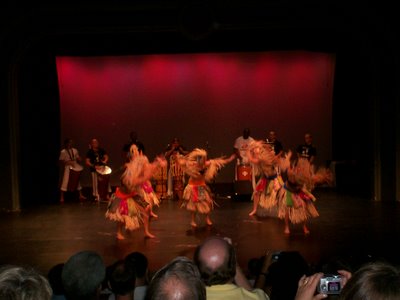
The musical instruments were various forms of percussion, with the exception of an electric violin and a really interesting instrument that sounded like a didgeridoo. In all of these photographs you will notice the musicians in the background. The dancers wear colorful costumes designed to resemble traditional dress.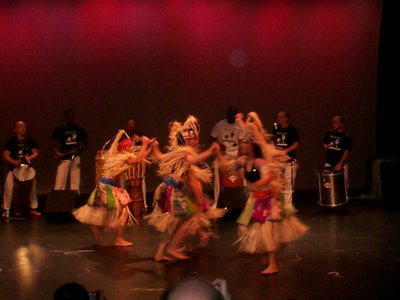
Sometimes, but not always, their music was accompanied by vocals. The vocals consisted of chanting, singing, and occasional call and response. The guy doing the call and response was more entertaining than Cab Calloway singing scat in the Cotton Club. He was a huge character and proved to be an avid body checker during later performances. Below you will note a shiny bald head. Can you believe that guy? Sticking his big polished head in my picture? I theorize that the bald man is Jason Alexander, of Seinfeld fame. This guy's big toady head hijacked several otherwise great photographs. I think I should put Gus's face on the shiny head...too bad I only have Paint, the Pong of Microsoft Office.
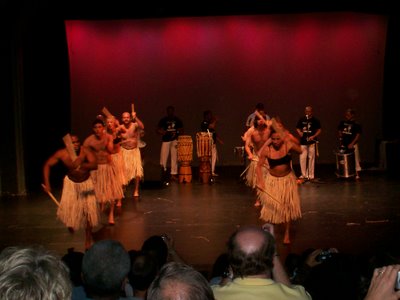
In the pictures above and below you can see that the dancers have sticks in their hands. This is a dance called maculele, and was created by slaves working on sugarcane plantations. The sticks represent the machetes that the slaves used to cut sugar cane; the dance movements symbolize motions used while harvesting. (Look--that guy's in this pic too. Clapping, no less! Clapping like a seal for a frozen salmon. Clapping and refracting enough beams of light for NASAs Hubble telescope to mistakenly report the birth of a mini galaxy in Ukranian Villiage.)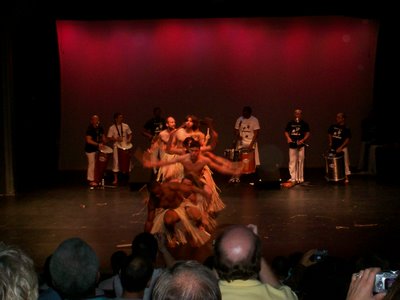
The photographs below feature a series of shots with dancers wearing green and yellow; these are my favorite costumes. The dancers are dancing coco de roda, from the beach regions of northeast Brazil. Coco de roda incorporates motions and steps traced to the indigenous Tupis people of Brazil.
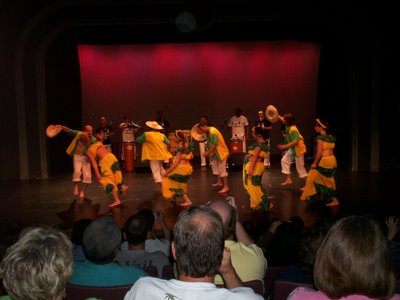
If Capoeira looks like something you'd be interested in, contact Grupo Axé Capoeira at 773.368.4777 and ask for Monitor Bambu. The classes are at Enso Yoga and Martial Arts, 1329 S. Michigan Avenue--2nd floor. Their website is www.axechicago.com. 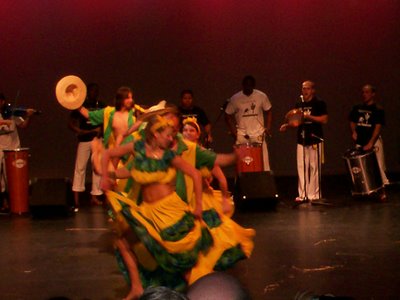
Grupo Axé Capoeira has been around since 1982; they have released five CDs and a video of their 2000 International Encounter. The photos you have seen so far reveal the soft side of capoeira. All of this frolicking in lemon and lime is child's play compared to the troca de corda! Bow to your mestres, feeble student of capoeira!
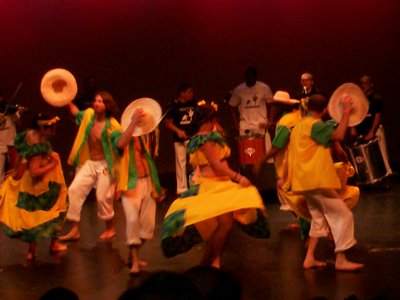
These dancers are cool, but the true badasses are coming up. Many of the musicians in the background eventually perform capoeira onstage; they turned out to be some of the best martial artists in the entire group.
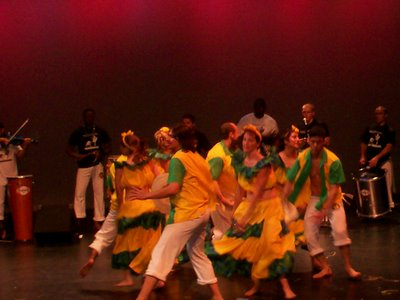 I wanted to purchase a pair of the capoeira pants to lounge in and drink dirty martinis; however, the Mayor said that plan was ill advised. She indicated that the pants were in poor taste and would not compliment my figure. The Cricket remained silent but cocked an eyebrow and shook her head. Secretly, she too wanted a pair of capoeira pants. If they had the word "JUICY" stitched across the ass, the Mayor would have been right there with us.
I wanted to purchase a pair of the capoeira pants to lounge in and drink dirty martinis; however, the Mayor said that plan was ill advised. She indicated that the pants were in poor taste and would not compliment my figure. The Cricket remained silent but cocked an eyebrow and shook her head. Secretly, she too wanted a pair of capoeira pants. If they had the word "JUICY" stitched across the ass, the Mayor would have been right there with us.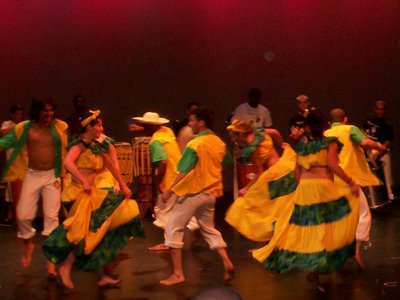
Finally, the dancers wrapped it up and they brought out some new instruments for another phase of the performance...
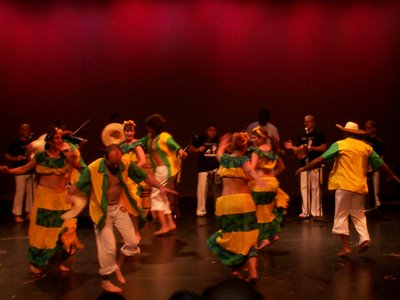
Now it's time for the hard-core capoeira. These guys are going through a troca de corda to level-up their belts. This guy has some badass moves; with the agility of a cheetah and the speed of a searing comet, this quy will jack you quicker than the Minx can disrobe a quarter pounder with cheese. He is no three toed sloth!
Like most forms of martial arts, the capoeira belt-system is color-coded. There are belts for students aged thirteen and younger, and belts for students aged fourteen to adult. The color of your belt reflects the students physical abilities, knowledge of capoeira, and dedication to the art.
In both age-groups, the lowest belt level is white--but you still have to earn that belt. Your first belt to signify a graduated student and beyond is a green belt--olive in color. That belt symbolizes "monitor" status. A step above that--instructor level--means your belt is yellow and green. Next, you will be rewarded an all yellow belt that means professor 1 grau. I noticed many capoeiristas wearing green belts, or green and yellow. I found the guys wearing the green belts to be some of the more graceful capoeristas. The highest belt you can get is a white and sort-of umber colored belt. That belt puts you at the level of estagiário.
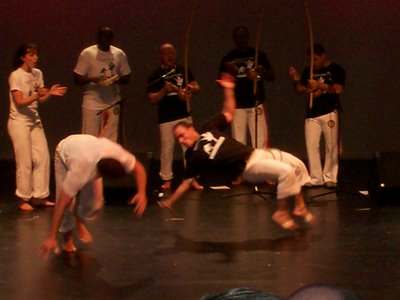 The head mestre, Mestre Barrão, appeared to have a red and white belt, but I couldn't be sure from my vantage point. If so, that means he is level mestre 2 grau; the ceremony might even have elevated his status, but I'm not sure. He was really good, and I noticed the others demonstrated immense respect for his abilities.
The head mestre, Mestre Barrão, appeared to have a red and white belt, but I couldn't be sure from my vantage point. If so, that means he is level mestre 2 grau; the ceremony might even have elevated his status, but I'm not sure. He was really good, and I noticed the others demonstrated immense respect for his abilities.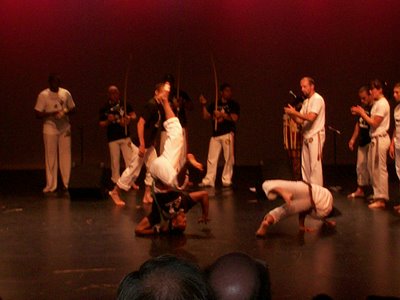
Mestre Barrão is an accomplished capoeira teacher who has successfully competed in numerous events. In 1982 he won the prestigious capoeira National Championship in Rio de Janeiro. Prior to that, in 1980, he began teaching. He has been teaching ever since, and is a major reason capoeria has a following in Chicago.
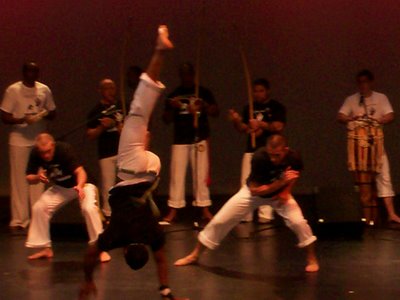
To learn more about capoeira in Chicago--or to take classes--just check out their website. It's a great way to stay fit and feel connected to an interesting and growing community that spans the globe.
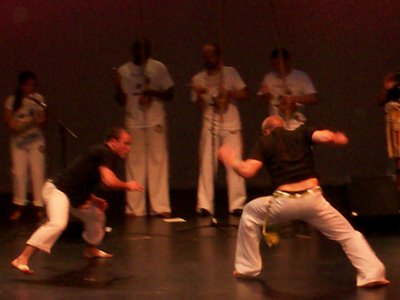
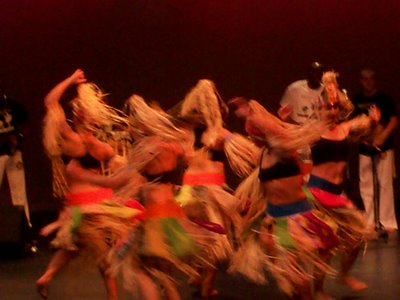
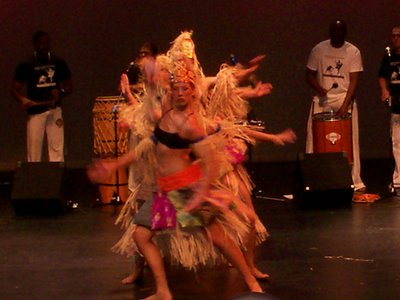
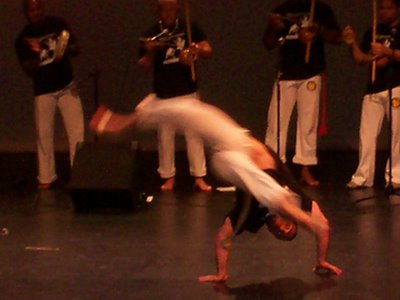
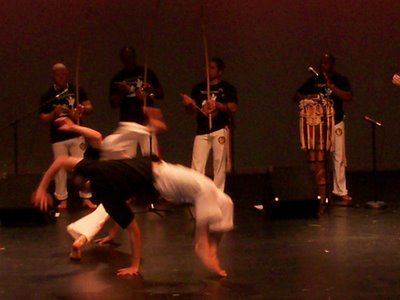

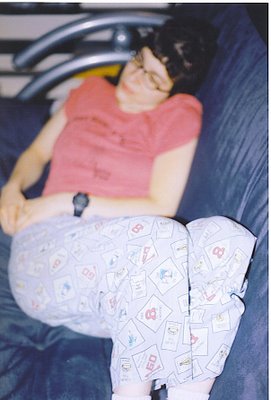

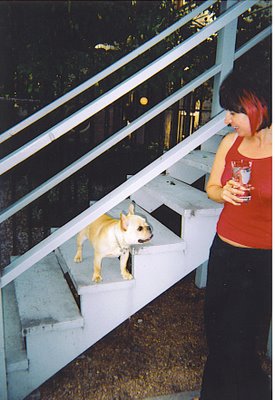


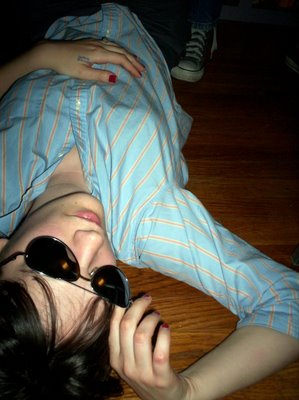
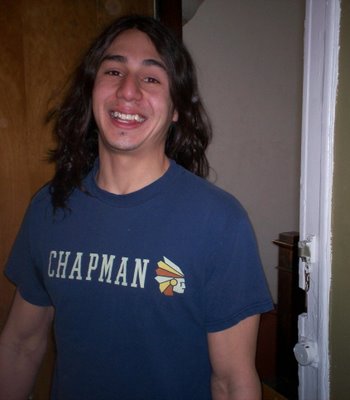


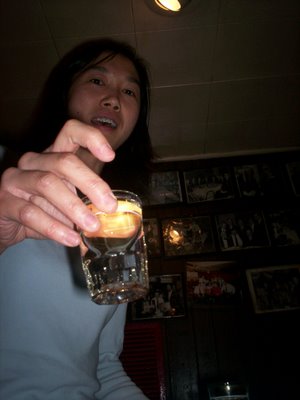

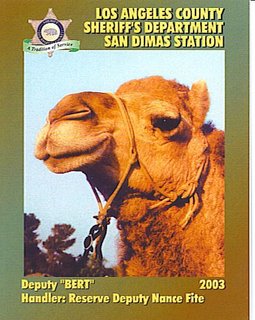
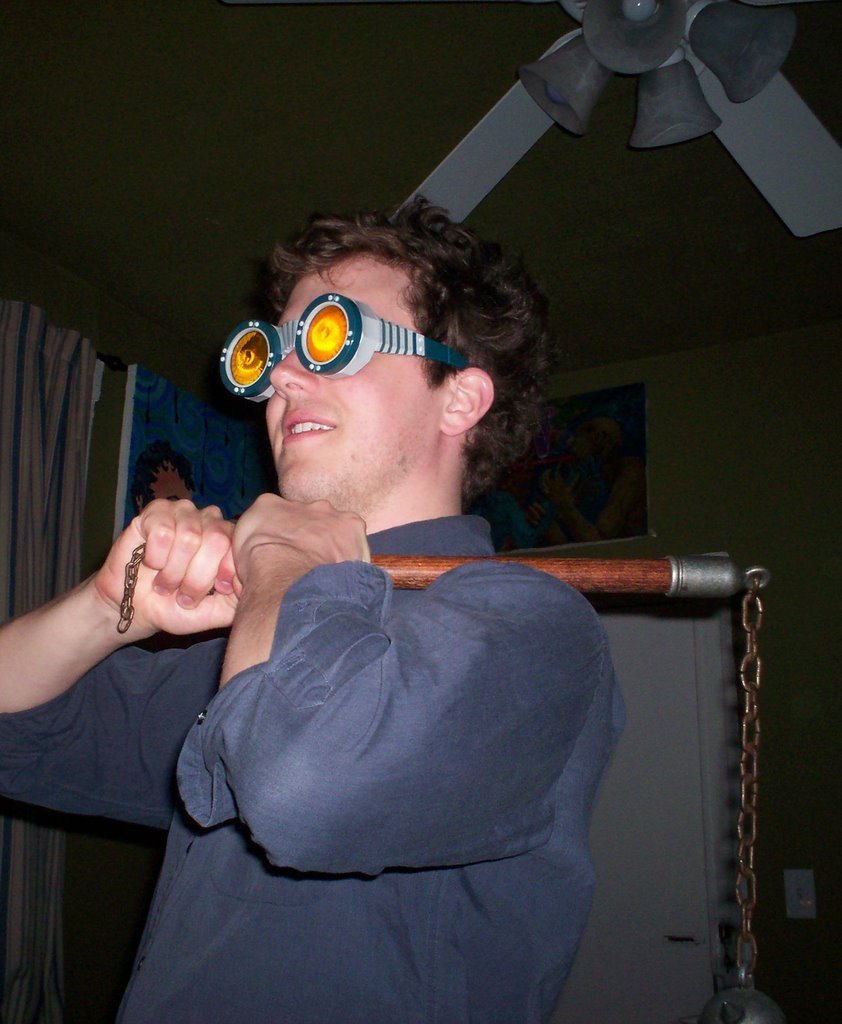

No comments:
Post a Comment